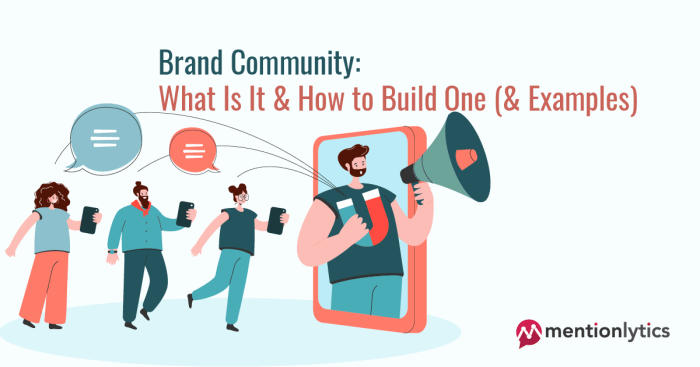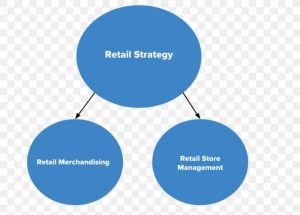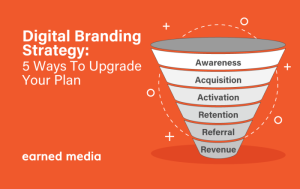
Content Strategy and Engagement
Building a thriving brand community requires a robust and engaging content strategy. This involves careful planning, consistent execution, and a keen understanding of your audience’s needs and preferences. A well-defined content calendar, proactive community management, and the right tools are essential for success.A successful content strategy fuels consistent community engagement, fostering a sense of belonging and loyalty among your brand advocates.
This section details the key components of creating a compelling content plan and effectively managing interactions within your community.
Content Calendar Development
A diverse content calendar is crucial for maintaining consistent engagement. It should incorporate a variety of formats to cater to different preferences and learning styles. Consider including articles offering valuable insights, engaging videos showcasing behind-the-scenes content or product demonstrations, interactive polls to gauge community opinion, and live Q&A sessions to address questions directly. For example, a weekly schedule might include a blog post on Monday, a short video on Wednesday, a poll on Thursday, and a live Q&A on Friday.
This variety keeps the community interested and involved.
Conversation Initiation and Response
Proactive engagement is key to building a strong community. This involves initiating conversations, responding promptly to comments and messages, and actively participating in discussions. For instance, you might post thought-provoking questions related to your industry or brand, share relevant news articles, or run contests and giveaways to encourage participation. Responding to comments and messages within a reasonable timeframe (ideally within 24 hours) shows that you value your community’s input and are actively listening.
Addressing negative feedback constructively and empathetically can also strengthen your community bonds.
Effective Community Management Techniques
Effective community management goes beyond simply responding to comments. It’s about fostering a positive and inclusive environment where members feel comfortable sharing their thoughts and experiences. This involves setting clear community guidelines, moderating discussions to prevent negativity or conflict, recognizing and rewarding active participants, and highlighting user-generated content. For example, regularly featuring community member photos or reviews on your social media channels shows appreciation for their contributions.
Highlighting positive interactions and showcasing successful collaborations also builds community morale.
Content Scheduling and Automation Tools
Several tools can streamline content distribution and scheduling. Hootsuite, Buffer, and Sprout Social are popular choices offering features such as scheduling posts across multiple platforms, analyzing engagement metrics, and managing social media interactions from a centralized dashboard. These tools save time and ensure consistent content delivery, maximizing your reach and engagement. Using these tools allows for pre-scheduling of content, freeing up time for other community management tasks and spontaneous interactions.
Visual Identity and Brand Guidelines

A strong visual identity is crucial for building a cohesive and recognizable brand community. Consistent visual elements create a sense of belonging and reinforce your brand’s message across all platforms. This section details the creation and implementation of visual guidelines to ensure a unified brand experience within your community.A well-defined visual identity helps members easily identify and connect with your brand, fostering a sense of community and loyalty.
It also enhances the overall professionalism and credibility of your brand. In short, a consistent visual approach is a key ingredient in building a thriving online community.
Logo Design and Usage
The logo is the cornerstone of your visual identity. It should be memorable, relevant to your brand, and easily adaptable to various sizes and formats. Consider using a versatile logo design that works well both in color and monochrome. The logo should be consistently placed in a prominent position on all community platforms, maintaining a consistent size and spacing around it to prevent it from looking cramped or lost.
For example, your logo might feature a stylized icon alongside your brand name in a specific font. Using different variations of the logo (e.g., a smaller version for social media profile pictures) should be clearly defined in the brand guidelines.
Color Palette Selection and Application
Your brand’s color palette plays a significant role in establishing its mood and personality. Choose colors that align with your brand values and resonate with your target audience. For instance, a technology company might opt for cool blues and greens, conveying trust and innovation, while a lifestyle brand might use warmer tones like oranges and yellows to evoke feelings of energy and optimism.
The brand guidelines should specify the primary and secondary colors, along with their hex codes, to ensure consistent usage across all platforms. Additionally, it’s important to define the usage of color variations and shades for different purposes (e.g., buttons, backgrounds, text).
Typography and Font Selection
Font choices directly impact readability and brand perception. Select fonts that are legible, aesthetically pleasing, and reflect your brand’s personality. Typically, two or three fonts are sufficient: one for headings, one for body text, and potentially a third for emphasis. For example, a clean sans-serif font like Open Sans might be used for body text, while a more bold serif font like Merriweather could be used for headings.
Brand guidelines should clearly define which fonts to use for various applications and specify font sizes and weights for consistent readability.
Examples of Visually Appealing Community Content
Maintaining visual consistency is paramount. Consider these examples:
- Social Media Posts: Use consistent filters, color palettes, and graphic elements across all social media platforms. For example, Instagram posts might feature high-quality product photography with overlaid text using your brand’s primary font and color palette. Facebook posts could utilize a similar style but might incorporate more text and less visual emphasis.
- Website Banners: Website banners should prominently feature the logo and use the brand’s color palette. They should also incorporate high-quality imagery relevant to your brand and community. For example, a banner could showcase a group of community members participating in a brand-related activity, further solidifying the community’s identity.
- Email Newsletters: Email newsletters should use the brand’s fonts, colors, and logo to maintain a consistent visual identity. Use high-quality images and ensure the layout is clean and easy to read.
Importance of Consistent Visual Branding
Consistent visual branding builds brand recognition and trust. A unified visual identity helps create a sense of community and belonging among members, fostering loyalty and engagement. This consistent presentation across all platforms reinforces your brand’s message and values, creating a memorable and positive brand experience for everyone involved. Inconsistency, on the other hand, can lead to confusion and dilute your brand’s image, hindering the development of a strong community identity.
Community Guidelines and Moderation
Building a thriving brand community requires more than just engaging content; it necessitates a clear framework for acceptable behavior and a robust moderation system. This ensures a safe, inclusive, and positive space for all members, fostering genuine connection and brand loyalty. Effective community guidelines and consistent moderation are crucial for preventing conflicts and maintaining a healthy online environment.A well-defined set of community guidelines provides a shared understanding of expectations, promoting responsible interactions and minimizing disruptive behavior.
Simultaneously, a proactive moderation strategy allows for swift and fair responses to violations, protecting the community’s integrity and fostering a sense of trust among members.
Defining Acceptable Behavior and Content
Community guidelines should explicitly Artikel what constitutes acceptable behavior and content within the community. This includes clear stipulations regarding respectful communication, prohibiting harassment, hate speech, and personal attacks. Additionally, guidelines should address intellectual property rights, specifying rules about sharing copyrighted material. For example, a clear statement might be: “All content shared must respect copyright laws. Unauthorized use of copyrighted material will result in content removal and potential account suspension.” The guidelines should also specify acceptable posting formats and frequency to prevent spam and ensure content quality.
A section on data privacy, outlining how member information will be handled and protected, is also crucial. Finally, a clear process for reporting violations should be detailed, empowering members to contribute to maintaining a positive community environment.
Content Moderation Processes
Effective content moderation involves a multi-faceted approach. This begins with establishing clear roles and responsibilities for moderators, providing them with the necessary training and tools. A robust reporting mechanism allows community members to flag inappropriate content or behavior, enabling prompt review and action. Moderators should follow a consistent and transparent process for reviewing reported content, ensuring fairness and consistency in their decisions.
This might include a tiered system for addressing violations, ranging from warnings to temporary or permanent suspensions, depending on the severity of the infraction. For instance, a minor violation like off-topic posting might result in a warning, while repeated harassment could lead to a permanent ban. Regular reviews of the community guidelines are also necessary to adapt to evolving community needs and address emerging challenges.
Addressing Violations of Community Guidelines
Addressing violations requires a balanced approach that prioritizes fairness, transparency, and consistency. When a violation occurs, moderators should investigate the situation thoroughly, gathering relevant evidence before taking action. Members should be notified of the violation and the specific guideline breached, along with the consequences. Appeals processes should be available to allow members to challenge decisions, ensuring fairness and due process.
For example, a member accused of harassment might be given the opportunity to explain their actions before a final decision is made. Documentation of all actions taken is crucial for maintaining accountability and transparency. This includes logging reported incidents, the actions taken, and the outcomes.
Proactive Moderation Strategies
Proactive moderation plays a vital role in fostering a positive community environment. This involves actively monitoring community activity, identifying potential issues before they escalate, and engaging members in positive interactions. Proactive strategies include regularly reviewing content, engaging in community discussions, and responding promptly to member inquiries. For instance, a moderator might actively participate in discussions, offering guidance and encouragement, while also subtly guiding conversations away from potentially contentious topics.
Furthermore, proactively promoting positive behavior and highlighting exemplary members can create a positive feedback loop, reinforcing desired behaviors and fostering a sense of community. This fosters a sense of belonging and encourages positive interactions among members.
Leveraging Community for Brand Growth

A thriving brand community is more than just a collection of followers; it’s a powerful engine for brand growth. By fostering a strong sense of belonging and shared values, brands can leverage their communities to significantly enhance brand awareness, reputation, and ultimately, the bottom line. This section explores how to effectively utilize a brand community to drive business success.A strong brand community significantly improves brand awareness and reputation through organic word-of-mouth marketing.
Community members, feeling invested in the brand, actively share their positive experiences, leading to increased visibility and positive sentiment across various platforms. This organic reach often surpasses the impact of traditional advertising campaigns, creating a more authentic and trustworthy brand image. The community acts as a powerful amplifier, spreading brand messages far and wide.
Community Feedback in Product Development and Marketing
Utilizing community feedback is crucial for creating products and marketing campaigns that truly resonate with the target audience. By actively soliciting and analyzing feedback, brands can identify unmet needs, refine existing products, and develop more effective marketing strategies. This iterative process ensures products and marketing messages align with the desires and expectations of the community, fostering loyalty and driving sales.For example, a company could implement a feedback system on its website or social media channels, allowing community members to share their thoughts and suggestions on new product features or marketing campaigns.
Analyzing this data can reveal trends and insights that inform product development and marketing decisions, leading to more successful launches and improved customer satisfaction. This approach allows for continuous improvement based on real-world experiences.
Leveraging Community Members as Brand Advocates
Empowering community members to become brand advocates is a highly effective strategy. By providing them with the tools and resources they need, brands can transform passionate users into powerful ambassadors. These advocates organically promote the brand, building trust and credibility among potential customers. This approach is far more impactful than traditional influencer marketing, as it feels more authentic and less promotional.Strategies for cultivating brand advocacy include recognizing and rewarding active community members, providing exclusive access to new products or information, and empowering them to share their experiences through user-generated content campaigns.
For instance, a company might offer early access to new products to its most engaged community members, encouraging them to share their experiences and reviews online. This fosters a sense of exclusivity and encourages positive word-of-mouth marketing.
Successful Brand Communities Driving Business Growth
Numerous brands have demonstrated the power of community in driving significant business growth. Consider the passionate communities surrounding brands like Harley-Davidson or LEGO. These communities are not just customer bases; they are vibrant ecosystems of enthusiasts who actively contribute to the brand’s identity and success. Their loyalty translates into repeat purchases, positive word-of-mouth referrals, and valuable feedback that drives innovation.Harley-Davidson’s community fosters a strong sense of belonging among riders, creating a powerful brand identity rooted in freedom, adventure, and camaraderie.
This fosters intense brand loyalty and drives sales, while LEGO’s community thrives on creativity and collaborative building. This passion translates into strong sales and the continuous development of new and innovative products based on community feedback and ideas. These are just two examples illustrating how a dedicated community can translate into significant business growth.





